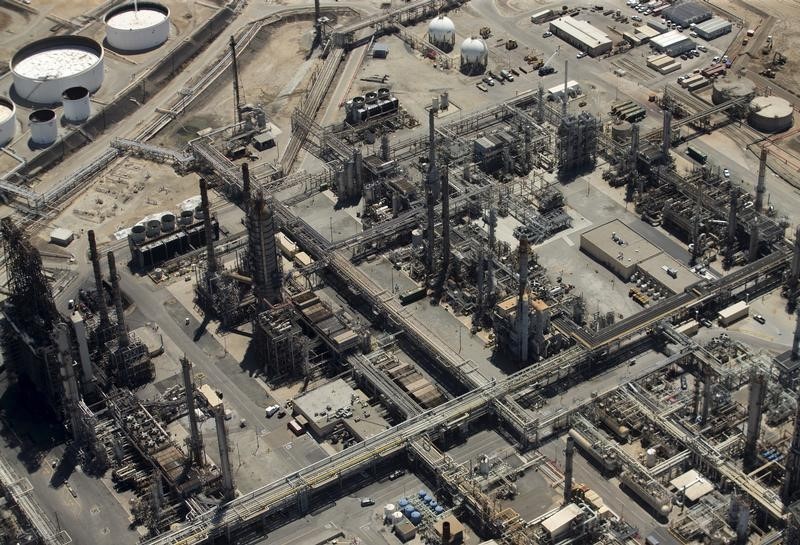By Keith Wallis
SINGAPORE, March 4 (Reuters) - U.S. crude futures rose in early Asian trade on Friday, buoyed by renewed optimism prices may have bottomed out after official data showed U.S. oil production fell to its lowest level since November 2014.
U.S. crude futures CLc1 had climbed 11 cents to $34.68 a barrel by 0019 GMT, after settling down 9 cents in the previous session.
Oil prices are stable with the decline in U.S. production providing support, ANZ said in a note on Friday.
While U.S. crude inventories rose to a new record of 517.98 million barrels last week, output fell for the sixth straight week to 9.08 million barrels a day, according to data from the U.S. Department of Energy's Energy Information Administration. EIA/S
Further cuts in U.S. output are possible in the coming months.
"The tight credit market will make it difficult for U.S. shale producers to refinance upcoming debt and we may see an accelerated decline in U.S. oil production in 2016-17," ANZ said.
That came as Credit Suisse (VX:CSGN) said in a report that oil prices could hit $50 a barrel in May. decline in U.S. production will fuel a 1.5-percent drop in oil supply by non-members of oil producers' cartel OPEC this year, the first year of non-OPEC negative supply growth since 2008, Paul Bloxham, chief Australia economist at HSBC said in a report on Friday.
Non-OPEC supply is forecast to fall by 850,000 barrels a day this year of which 760,000 barrels will be cut from U.S. production.
"We currently assume U.S. tight oil production troughs in the first half of 2017 and recovers thereafter in line with our assumption of improving prices," Bloxham said in the report.
HSBC, which kept its price forecasts unchanged, assumed an average Brent price of $45 a barrel this year, rising to $60 in 2017 and $75 thereafter.
Demand is forecast to grow by 1 million barrels a day, equivalent to a 1.1-percent rise, this year, but "well below consensus from the major forecasting agencies", Bloxham added.
Contracting non-OPEC supply and still-healthy demand growth should lead to a tightening of around 1.5 million barrels a day this year but this will not be sufficient to completely clear the 2 million barrels a day of oversupply, Bloxham said.
